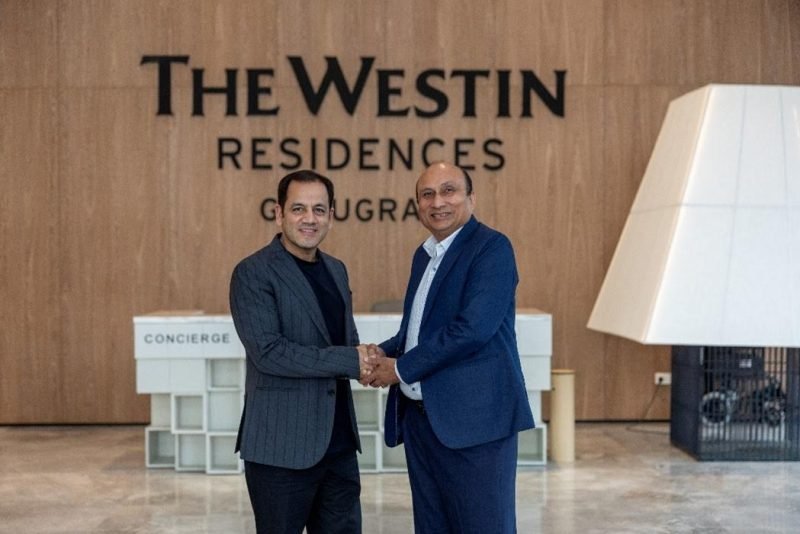A clear outcome of the pandemic was seen in the share of mid-range and high-end property segments. The share of sales of homes costing less than Rs 50 lakh constituted 42% of all sales in the January-June 2021 period
Residential sales recorded a 67% increase on a year-on-year basis in H1 2021 despite the COVID-19 second wave. Launches also jumped 71% YoY, a report titled India Real Estate – Residential, January-June 2021 by Knight Frank India has said.
A total sales of 99,416 residential units were recorded in the first half of 2021 (H1 2021) across top markets, while new launches in the same period (January – June 2021) were recorded at 103,238 units, it said.
The second quarter of 2021 recorded a 185% YoY rise as the second wave of Covid-19 remained less disruptive for the sector despite severity, the report said.
H1 2021 saw a rise of 67% YoY in sales volume with the first half of this period recording the larger part of the total volumes. During the early part of this year, sales volumes were greatly influenced by two markets – Mumbai and Pune, that together constituted over 45% of the total sales amongst key markets, the report said.
These two markets were given their orbital velocity by the Maharashtra government’s decision to lower stamp duty rates for a limited period. While residential sales started to show a resurgence, the momentum got impacted by the second wave of the pandemic starting towards the end of March 2021.
Interestingly, the period of the second wave coincided with that of the first wave last year which had brought the residential sales market to a screeching halt. Fortunately, the second wave, despite its extremely morbid potency, was less severe on the residential real estate market.
As sales volumes stabilised, especially in the early part of H1 2021, unsold inventory reduced by 1% over the same period last year. Prices remained mostly contained with a reduction of -1% to -2% Year on Year (YoY), the report said.
A clear outcome of the pandemic was seen in the share of mid-range and high-end property segments. The share of sales of homes costing less than Rs 50 lakh reduced by around 500 basis points (BPS) and constituted 42% of all sales in the January-June 2021 period.
Homes costing over Rs 1 crore constituted about 19% of all sales, while units at Rs 50 lakh to 1 crore improved by approximately 400 BPS to be at 39%. The reducing proportion of affordable homes (less than 50 lakh) is directly related to the challenges thrown up by the pandemic which reduced the economic confidence of home buyers in that category due to the threat of job loss, reduced income, inching CPI and other challenges, it said.
New launches in H1 2021 were higher by 71% YoY and were not surprisingly led by the two markets of Mumbai and Pune in Maharashtra. All markets saw launches increase significantly as developers took measures to capitalize on the strength of demand.
A majority of the new launches were recorded in the first quarter of the year, while the impact of the second wave in Q2 2021 was felt in equal proportion by developers which impacted launches as well. Q2 2021 accounted for a little more than 1/4 of all launches in the first half of 2021. However, a comparison with the pandemic affected quarter from a year ago shows that Q2 2021 has recorded a YoY growth of 388% over Q2 2020.
“The gradual resumption of economic activity and increasing availability of the vaccine had sparked market traction in the second half of 2020 and this momentum carried over into Q1 2021. The second wave of COVID-19 infections has impeded this momentum but should be seen as more of a speed bump as YoY growth in market volumes remains strong in half-yearly and quarterly terms in the January to June 2021 period,” said Shishir Baijal, Chairman and Managing Director, Knight Frank India.
The limited period stamp duty cut which spiked home sales in Mumbai and Pune adequately demonstrates the need for policy level intervention to revive the residential market. Going by the tremendous success of the stamp duty cut in Maharashtra, other states may also consider similar demand stimuli at appropriate times that will not only help sales velocity but also propel economic activity, he said.
The significant increase in sales activity stemmed the fall in residential prices that was seen in 2020. Price levels in four of the eight markets were observed to remain at the same level or grow marginally YoY in H1 2021. In comparison, just one market had been able to maintain price stability in H2 2020. While developers offered flexible payment schemes to push sales across markets, the incidence of direct discounts was markedly lower during H1 2021.
The last four quarters marked by the pandemic have given rise to different sets of considerations for home buyers which has led to a renewal of buyer interest. Whether for want of larger homes or housing security, or indeed for the purpose of long-term investment, there has been a strong revival. Barring the affordable segment which was impacted by the uncertainties arising from the economic disruptions of the pandemic, the strength of the market was adequately demonstrated.
“We expect the residential segment to remain buoyant due to the attitudinal shift in mindsets of potential buyers and as and when normality returns, we expect the sales volumes to pick up pace,” Baijal said.
The unsold inventory has seen a reduction over the last year, albeit at a modest rate, reflecting the healthy pick-up in sales right across the markets. These markets have shown excellent promise in the demand appetite that had been holding back due to the second phase of the pandemic. It is expected that demand will revive as the unlocking progresses and people are able to complete their sales process.
Source : Money Control




